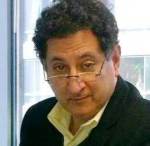Updated
Business Brief: Debate Rages on Future of Education Policy in Morocco; Morocco Joins Specialized World Bank Program; and Aquaculture Promises Strong Opportunities for Business – Jean R. AbiNader
Jean R. AbiNader, MATIC
January 10, 2018
What will the government do to improve the educational sector? This was at the center of a debate that erupted with the release of recommendations by the Higher Council for Education, Training, and Scientific Research late last year, which are contained in bill 17-51 submitted to Parliament. Originally intended as a strategic plan for 2015-2030, it took three years to come up with the current legislation, and it is already mired in controversy.
According to a series of articles in Morocco World News, two difficult issues are front and center – the intention to shift funding for the last year of secondary school and some university programs to wealthy families, local governments, NGOs, and companies; and provisions to restructure secondary school education – developing a prototype of what may be the future is part of the second MCC Morocco-US compact.
While Head of Government Saad Eddine El Othmani was quick to respond that new fees would only affect those who are able to bear them; until the bill is debated in February, nothing is off the table. The debate also heightens the gap between families who can afford expensive private education for their children and those who are left with an inadequate public school system.
While Morocco has quite a challenge in developing effective options to both upgrade the public schools and control costs of university programs, reform must be comprehensive, top to bottom, according to the bill. This is as true in the US as it is in Morocco. Both countries have yet to develop effective strategies for increasing the number of skilled workers to meet market demands, whether inside the education system or through technical and vocational studies. It will be instructive to take a closer look at the results of the MCC project as a potential signpost, both of options in secondary education and how the US can support Morocco in this vital effort.
Morocco joins the World Bank’s Government Debt and Risk Management (GDRM) program. This specialized group, under the World Bank Treasury, “provides capacity building and investment management services to institutions such as central banks, sovereign wealth funds, and national pension funds,” in Morocco’s case, the CDG group.
This program is financed by the Swiss State Secretariat especially “to assist middle-income countries and help them better their macroeconomic and fiscal management in an attempt to decrease vulnerability and fight back financial shocks.” For Morocco, this means access to experts who will help the country “in governing debt and risk portfolio while strengthening its technical capacity development.” There are currently 14 countries participating in the program.
Aquaculture looking good, according to statement by Morocco’s Secretary of State for Fisheries, Mbarka Bouaida at the 15th Europe-North Africa Convention. More than 120 companies and entrepreneurs met recently to develop business opportunities for greater EU investment in North Africa.
Aquaculture is a major player in Morocco’s agro-economy, accounting for 58% of exports in the sector, and 7% of overall exports. It generated $1.5 billion in exports in 2015, and with a total catch exceeding 1 million tons, it accounts for 2-3% of Morocco’s GDP, generating some 700,000 direct and indirect jobs.
Despite its more than 1400 miles of marine coast, Morocco has yet to develop its industry fully, even though it is the world’s 17th largest producer of fish globally. To build up its capabilities will require international investors with the know-how and technology to utilize Morocco’s human resources and geographic centrality to service regional and international markets.
Economic indicators downward slightly at year’s end as Morocco’s foreign reserves dipped to $25.81 billion, down 3.3% from this time last year, even with a slight uptick of .7% in the last week of 2017. This slight movement indicates what the government is still uncertain about when it will float the dirham, a move promised last July.
“However, the Moroccan government decided to delay the move, saying studies are being carried out to ensure enough time for the decision to take effect and to better understand its impact on the economy and, in particular, on the purchasing power of citizens.” The IMF supports Morocco’s goal and has provided financing to enable the country to avoid any large fluctuations. Initially, the current foreign exchange fluctuation range will be narrow and gradually expanded over several years.
